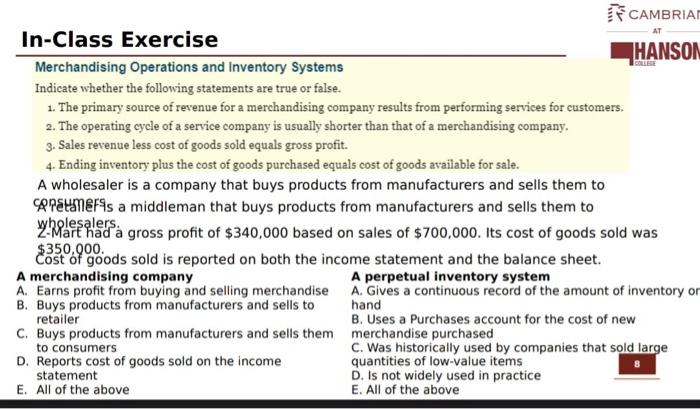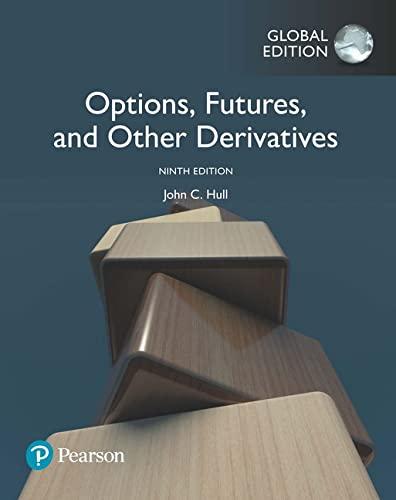In-Class Exercise Merchandising Operations and Inventory Systems Indicate whether the following statements are true or false. 1. The primary source of revenue for a merchandising company results from performing services for customers. 2. The operating cycle of a service company is usually shorter than that of a merchandising company. 3. Sales revenue less cost of goods sold equals gross profit. 4. Ending inventory plus the cost of goods purchased equals cost of goods available for sale. A wholesaler is a company that buys products from manufacturers and sells them to wholesalers. Z-Mart had a gross profit of $340,000 based on sales of $700,000. Its cost of goods sold was $350,000. Cost of goods sold is reported on both the income statement and the balance sheet. A merchandising company A. Earns profit from buying and selling merchandise B. Buys products from manufacturers and sells to retailer C. Buys products from manufacturers and sells them to consumers A perpetual inventory system A. Gives a continuous record of the amount of inventc hand B. Uses a Purchases account for the cost of new merchandise purchased C. Was historically used by companies that sold large In-Class Exercise Merchandising Operations and Inventory Systems Indicate whether the following statements are true or false. 1. The primary source of revenue for a merchandising company results from performing services for customers. 2. The operating cycle of a service company is usually shorter than that of a merchandising company. 3. Sales revenue less cost of goods sold equals gross profit. 4. Ending inventory plus the cost of goods purchased equals cost of goods available for sale. A wholesaler is a company that buys products from manufacturers and sells them to wholesalers. Z-Mart had a gross profit of $340,000 based on sales of $700,000. Its cost of goods sold was $350,000. Cost of goods sold is reported on both the income statement and the balance sheet. A merchandising company A. Earns profit from buying and selling merchandise B. Buys products from manufacturers and sells to retailer C. Buys products from manufacturers and sells them to consumers A perpetual inventory system A. Gives a continuous record of the amount of inventc hand B. Uses a Purchases account for the cost of new merchandise purchased C. Was historically used by companies that sold large







